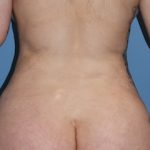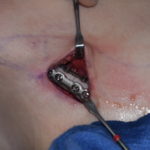Plastic Surgery Case Study – Custom Skull Implant for Head Widening
Background: Aesthetic skull augmentation can be done for a wide variety of deficient skull shape concerns. Changes can be made in skull height, skull width and frontal and posterior skull projection. In rare cases and with the use of a first stage scalp tissue expander, the entire skull can be augmented through a circumferential effect. Read More…


